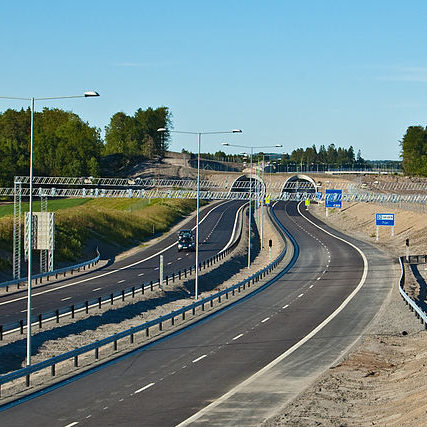
07
February
E-toll – what you should know today
The first month of the new e-TOLL rates for drivers of buses and vehicles with a maximum permissible weight of more than 3.5 tonnes, driving on toll sections of Polish roads, has already passed. Therefore, we can briefly summarise the impact of another increase on the total costs of transport and what changes will be implemented in the near future by the Ministry of Infrastructure.
As we reported in September last year, in November the network of national roads covered by the electronic toll collection system expanded by almost 50% - another 1,600 km of motorways and expressways were added to the current 3,620 km. Immediately after the expansion of the network, the legislative bodies planned further changes to e-TOLL in 2025, introducing a criterion that makes the rates dependent on the vehicle's CO2 emission class, in line with EU directives.
The structure of the e-Toll for each kilometre comprises three main components:
- the infrastructure charge - currently in operation;
- an external cost charge, calculated on the basis of a vehicle's CO2 emissions - a completely new charge resulting directly from EU Directive 2022/362;
- an external cost charge based on air pollution - another new charge, also resulting from the aforementioned directive.
In the ministerial assumptions, we note the differentiation of the charges: infrastructure and air pollution by EURO emission class. The external cost charge is defined by five classes of CO2 emissions. This imposes an obligation to submit new information on the vehicle's individual CO2 emissions to the National Fiscal Administration's Electronic Toll Collection System register, which is a completely new criterion for cost analysis.
The structure of the introduced additional charges includes a statutory inflationary increase, which means adjusting them to the consumer price index, which has an additional impact on the cost of driving each kilometre. At the beginning of December 2024, a communication from the Ministry of Infrastructure was published on the toll rates for 2025, which have been increased by more than 3% compared to last year.
In 2025, the category of road on which deliveries are made has additionally become important for road hauliers. The e-TOLL charge on a motorway or motorway will be different from that on national expressways or main roads.
Determination of the e-TOLL rates is possible after registration of the vehicle in one of the five applicable CO2 emission classes:
- class 1 - 95% and above of the CO2 reference emission factor;
- class 2 - 92% and above of the CO2 reference emission factor; class 3 - 50% and above of the CO2 reference emission factor;
- class 3 - 50% and above of the reference emission factor for CO2;
- class 4 - less than 50% of the reference emission factor for CO2;
- class 5 - zero-emission vehicles.
Despite the fact that the draft provides for a 6-month vacatio legis for the entry into force of the Act, related to the IT implementation in KAS, the costs of e-TOLL and the amount of penalties are already in force. It is worth noting that the cost of driving one kilometre on a national road may not exceed PLN 2.
Author: Mirosław Koczar